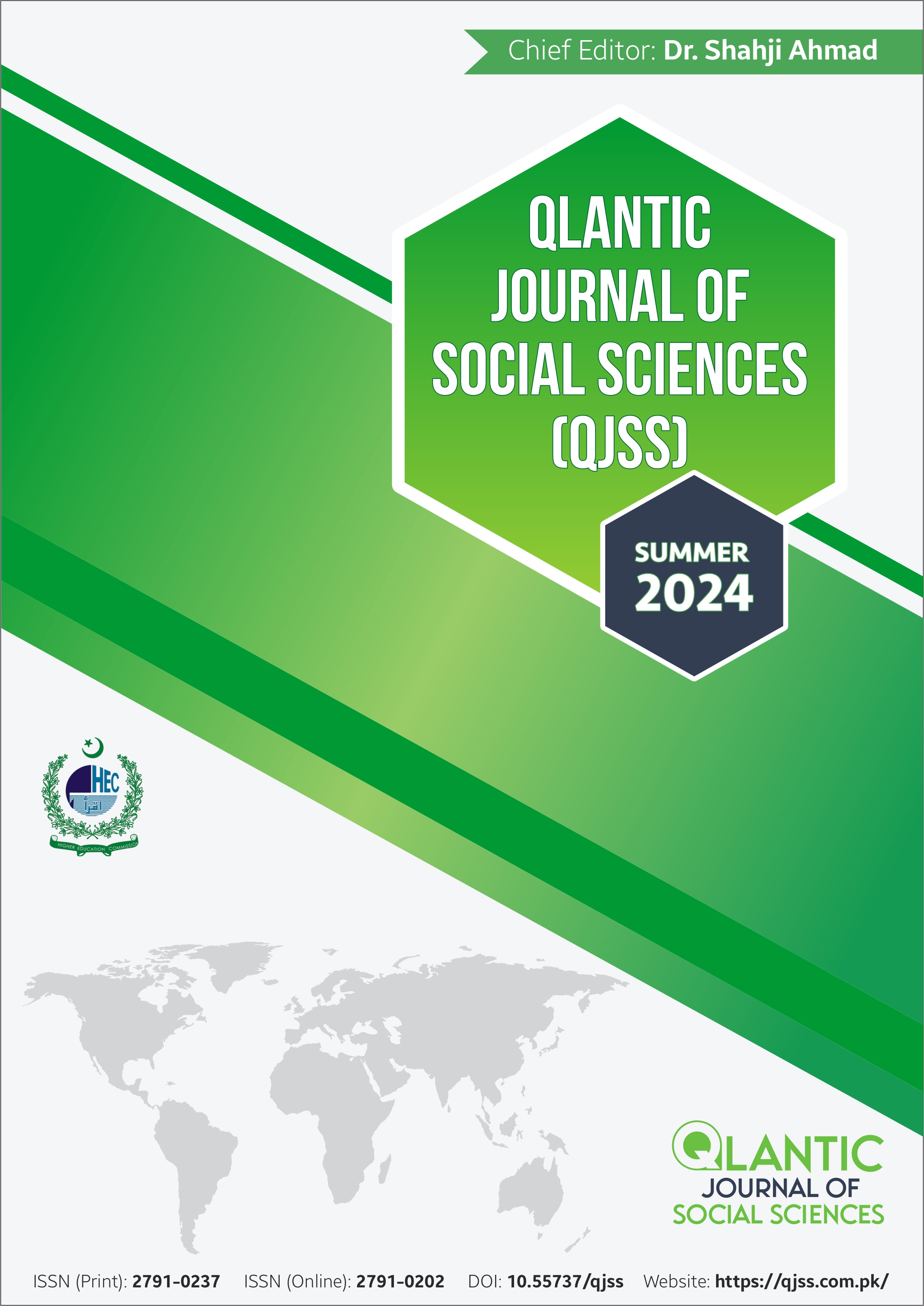United Nations Goals for Child Welfare in Pakistan: An Analysis of Midpoint Agenda
DOI:
https://doi.org/10.55737/qjss.301697523Keywords:
Sustainable Development Goals (SDGs), Residual Welfare Model, Child Welfare, Mid Point Agenda,, United Nations Child-related SDGs,, Child Poverty, Child Health and Child EducationAbstract
The primary objective of this study was to examine Pakistan's child welfare policies and programs in light of the United Nations' goals for 2030. The study aims to examine Pakistan's performance in child-related SDGs (Sustainable Development Goals) and to compare it to its neighbors, Sri Lanka, Bangladesh, and India. As a 'Quant-Qual Cross-sectional Study,' the researchers reviewed a number of secondary data sources available through their websites. Along with these many sources of quantitative data, the researchers also obtained qualitative information (e.g., child policies, programs, legislation, plans of action, etc.). It was a halfway evaluation, named the "Midpoint Agenda," of what is to be achieved by 2030. The Midpoint Agenda was analyzed in May 2024, nearly halfway through the UN goals set in 2015. The analysis of data leads us to the conclusion that child welfare in Pakistan remains at a residual level after 77 years. The welfare personnel's justified attitude has made it clear that Pakistan's residual welfare is the result of insufficient public investment and poor governance. Urgent attention is also required to overhaul all child welfare programs and instruments.
References
Arik, H., & Arik, M. (2009). Is It economic growth or socioeconomic development? A Crosssectional analysis of the determinants of infant mortality. The Journal of Developing Areas, 42(2), 31-55. https://doi.org/10.1353/jda.0.0027
ESCAP, U. (2024). Asia and the Pacific SDG progress report 2024: showcasing transformative actions. https://hdl.handle.net/20.500.12870/6659
Friedlander, W. A. (1980). Introduction to Social Welfare (5th ed.). Prentice Hall.
GoP (Government of Pakistan). (2009). National Education Policy 2009. Islamabad: Ministry of Education. https://itacec.org/document/2015/7/National_Education_Policy_2009.pdf
GoP (Government of Pakistan). (2009). Pakistan Social and Living Standard Measurement (PSLM) 2008-09. Islamabad: Statistical Division. https://www.pbs.gov.pk/content/pakistan-social-and-living-standards-measurement
ISA (International Sociological Association). (2010). Nordic Childcare Policies: Old & New Tensions. Gothenberg (Sweden): World Congress of Sociology
Stroup, H. (1965). Social Work: An Introduction to the Field. Eurasia Publishing House.
UNDP (United Nations Development Programme). (2010). Human Development Report 2010. New York: United Nations
UNDP (United Nations Development Programme). (2023). Human Development Report 2023. New York: United Nations
UNICEF. (2009). State of the World's Children: Celebrating 20 Years of the Convention on the Rights of the Child. Unicef.
UNICEF. (2024). The State of the World’s Children. New York: United Nations
United Nations. (2024). Asia-Pacific SDG Report 2024. New York: United Nations
United Nations. (2024). Human Development Report 2023/2024: Breaking the gridlock - reimagining cooperation in a polarized world. UN.




